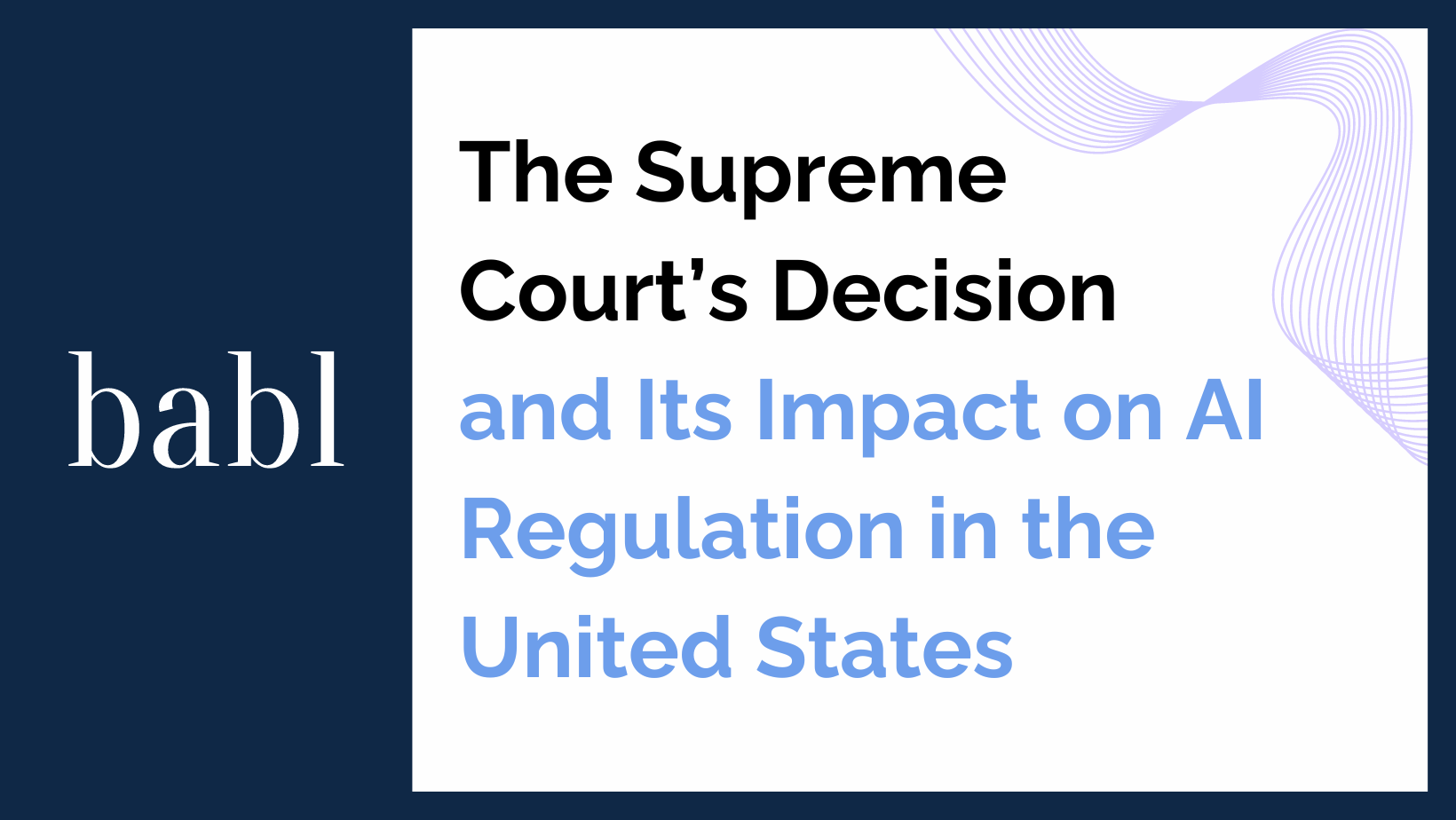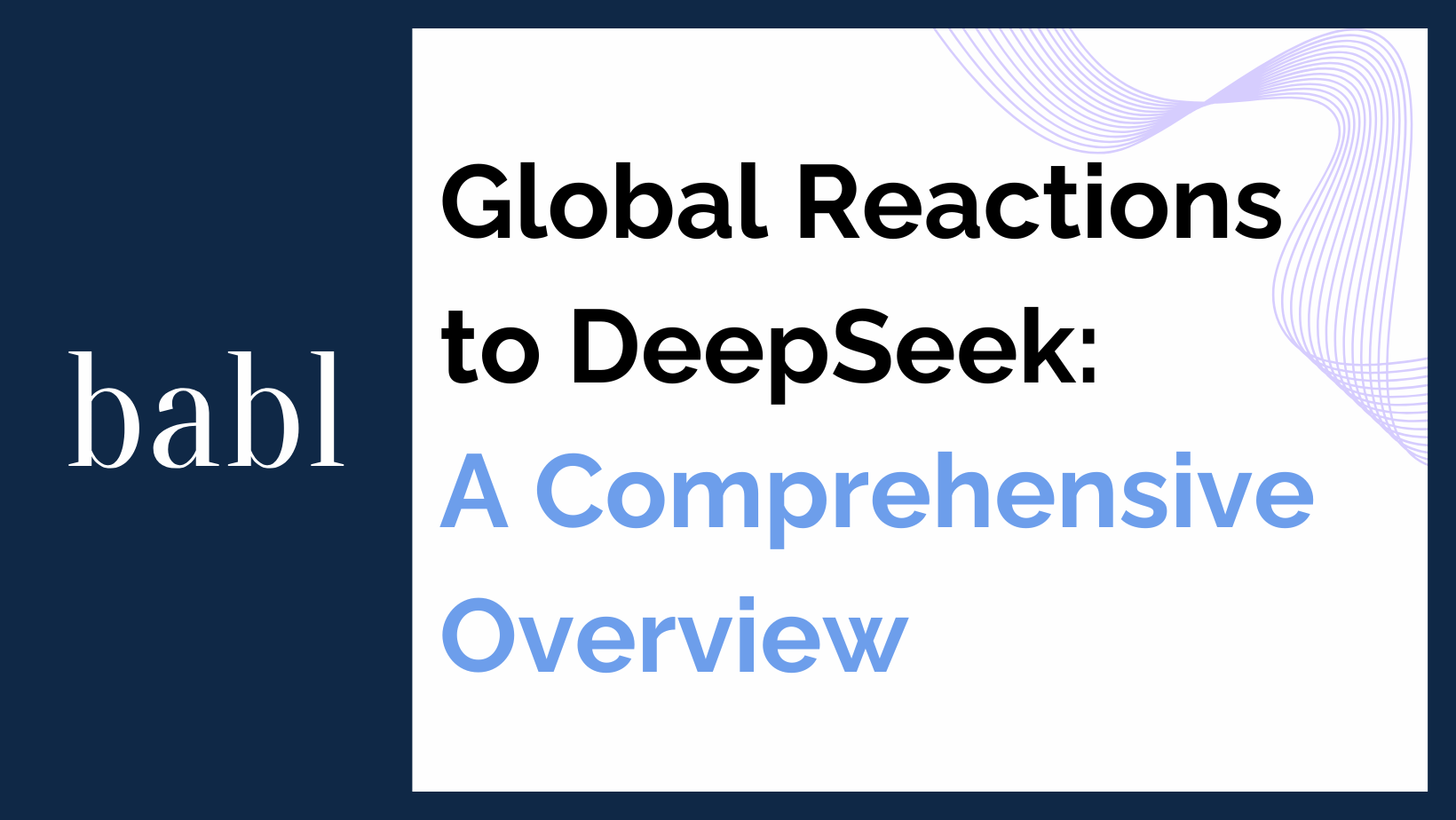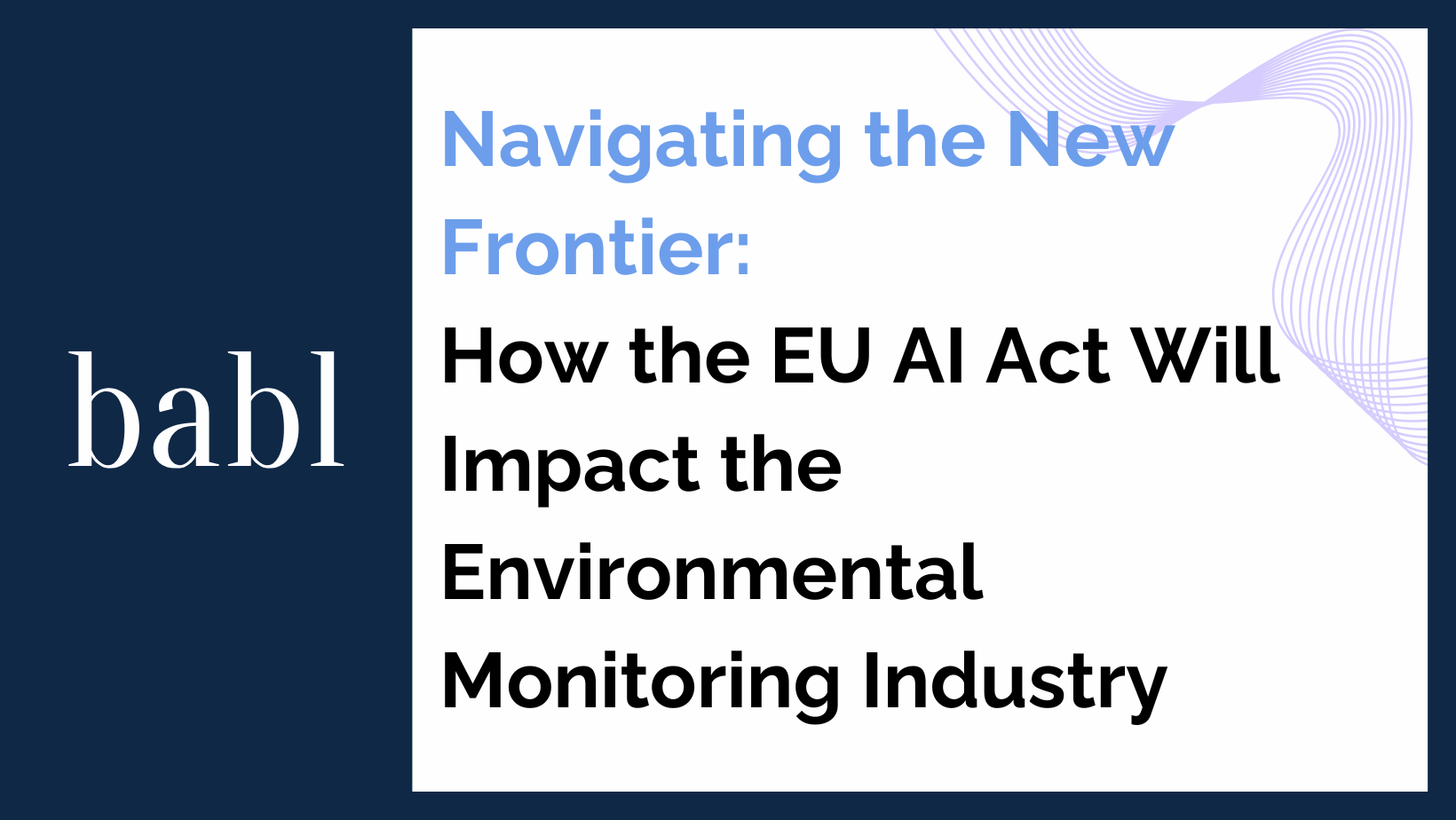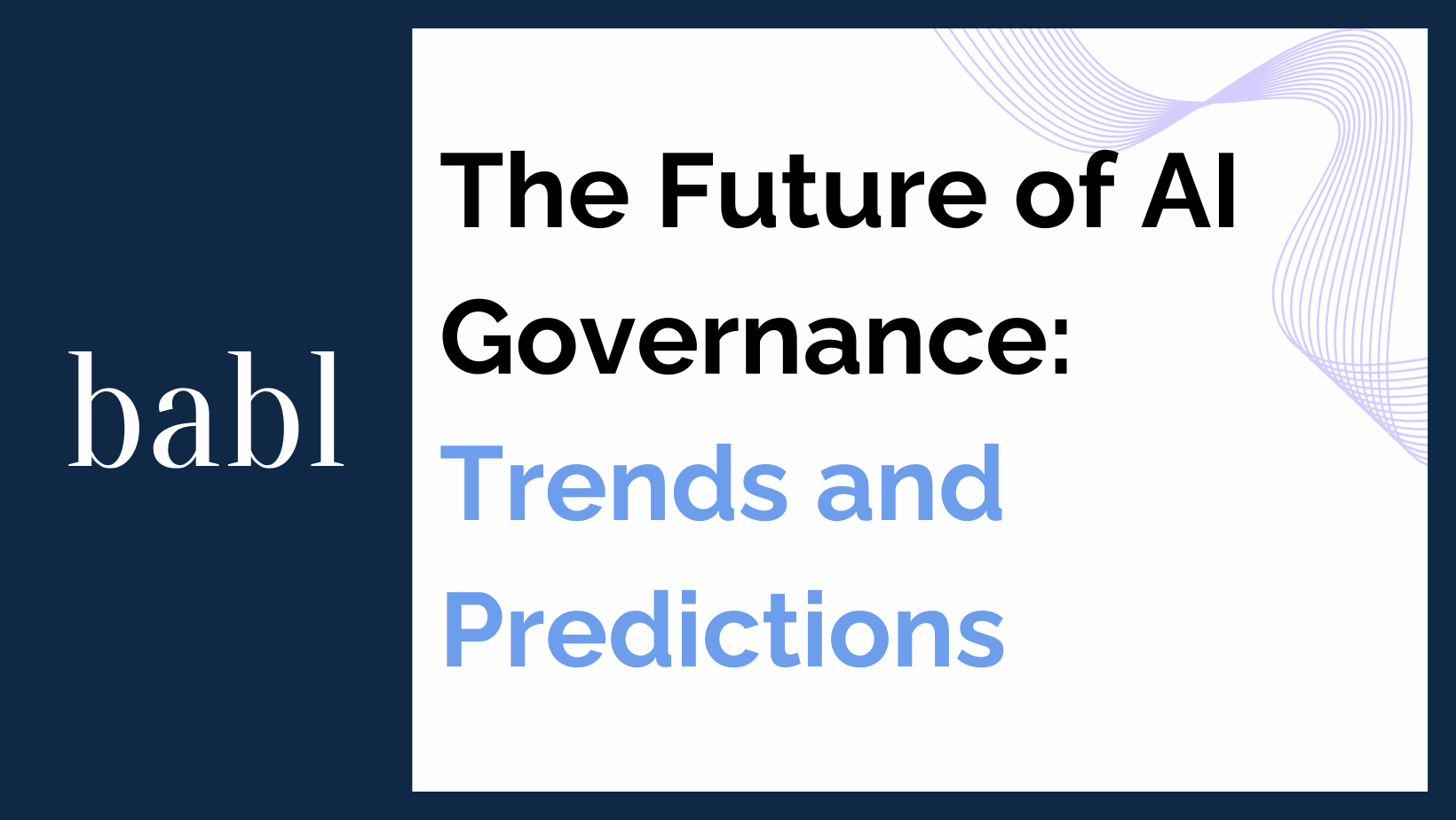In a landmark ruling on June 28, 2024, the U.S. Supreme Court fundamentally altered the regulatory landscape by overturning the long-standing Chevron deference principle in the case of Loper Bright Enterprises v. Raimondo. This decision significantly impacts the regulation of various sectors, including artificial intelligence (AI). This blog post explores how the Supreme Court’s decision will affect AI regulation in the United States, delving into its implications for federal agencies, tech companies, and the broader AI ecosystem.
Understanding Chevron Deference
For nearly four decades, the Chevron U.S.A., Inc. v. Natural Resources Defense Council, Inc. (1984) decision established a two-step process for judicial review of agency interpretations of statutes:
-
- Step One: Determine if Congress has directly spoken to the precise issue. If the statute is clear, that is the end of the matter.
- Step Two: If the statute is ambiguous, defer to the agency’s interpretation as long as it is reasonable.
This principle allowed agencies like the Federal Trade Commission (FTC) and the Federal Communications Commission (FCC) significant leeway to interpret and enforce regulations, particularly in complex and evolving sectors such as technology and AI.
The Supreme Court’s Decision and Its Implications
By overturning Chevron deference, the Supreme Court has emphasized judicial independence in statutory interpretation. This shift places greater responsibility on Congress to draft precise and comprehensive legislation, reducing the interpretive flexibility previously afforded to federal agencies.
Implications for AI Regulation:
-
- Increased Legislative Burden:
- Congress must now draft more detailed AI regulations, anticipating future technological developments and specifying how laws should be applied. This will likely slow down the legislative process, making it harder to quickly address new AI-related challenges.
- Judicial Interpretation Challenges:
- Courts will face increased pressure to interpret AI regulations without relying on agency expertise. Given the rapid pace of AI advancements, judges may struggle to stay informed about the latest technologies and their implications, potentially leading to inconsistent rulings.
- Impact on Existing Regulations:
- Current AI regulations, which often rely on broad agency discretion, may face legal challenges. Companies could contest these rules, arguing that agencies overstepped their statutory authority, leading to regulatory uncertainty.
- Increased Legislative Burden:
Case Studies in AI Regulation
Federal Trade Commission (FTC):
The FTC has been proactive in addressing AI-related issues, particularly around data privacy and consumer protection. The overturning of Chevron deference complicates this role:
-
- Data Privacy: The FTC’s efforts to enforce data privacy standards in AI applications may be hampered as courts scrutinize the agency’s interpretations of ambiguous statutes.
- Consumer Protection: The agency’s ability to regulate deceptive AI practices will depend on how precisely Congress has legislated on these matters.
National Institute of Standards and Technology (NIST):
NIST plays a crucial role in developing AI standards and guidelines. The Supreme Court’s decision could:
-
- Standard Development: Limit NIST’s ability to interpret and apply broad legislative mandates, requiring more detailed statutory guidance from Congress.
- Innovation and Compliance: Slow down the standard-setting process, impacting both innovation and compliance efforts within the AI industry.
Industry Impact and Response
Tech Companies:
For major tech companies, the Supreme Court’s decision offers both challenges and opportunities:
-
- Legal Challenges: Companies can now more readily challenge AI regulations, potentially delaying or weakening enforcement.
- Compliance Strategies: Firms must invest in robust legal strategies to navigate the more stringent judicial scrutiny of AI-related rules.
Startups and Smaller Firms:
Smaller AI firms may struggle with the increased complexity and cost of compliance:
-
- Resource Allocation: These companies may need to allocate more resources to legal compliance, diverting funds from innovation and development.
- Regulatory Uncertainty: Uncertainty around AI regulations could stifle innovation, as smaller firms may hesitate to develop new technologies without clear regulatory guidance.
Broader Implications for AI Development
Innovation and Competition:
The Supreme Court’s decision could slow AI innovation in the U.S.:
-
- Regulatory Uncertainty: Ongoing legal battles and the need for more detailed legislation could create an uncertain environment, deterring investment in AI research and development.
- Global Competitiveness: The U.S. may fall behind other countries with more streamlined regulatory processes, impacting its leadership in AI innovation.
Ethics and Bias:
The court’s decision could complicate efforts to address ethical concerns in AI:
-
- Bias Audits: Agencies like the U.S. Equal Employment Opportunity Commission (EEOC) have been working on bias audits for AI hiring tools. Judicial reluctance to defer to agency expertise may undermine these efforts, making it harder to enforce fair hiring practices.
- Ethical Standards: Developing and enforcing ethical standards for AI will require more precise legislation, challenging lawmakers to keep pace with technological advancements.
Path Forward for AI Regulation
Legislative Action:
Congress must take proactive steps to address the new regulatory landscape:
-
- Detailed Legislation: Draft more specific and forward-looking AI laws to guide both agencies and courts.
- Bipartisan Efforts: Foster bipartisan cooperation to create comprehensive AI regulations that can adapt to future technological changes.
Judicial Education:
Courts will need ongoing education about AI technologies:
-
- Expert Testimonies: Increase reliance on expert testimonies to inform judicial decisions on complex AI issues.
- Judicial Training: Implement training programs for judges to keep them updated on AI advancements and regulatory challenges.
Industry Collaboration:
Collaboration between the tech industry, lawmakers, and regulators is essential:
-
- Public-Private Partnerships: Foster partnerships to develop balanced AI regulations that promote innovation while protecting public interests.
- Stakeholder Engagement: Engage diverse stakeholders in the legislative process to ensure comprehensive and effective AI regulation.
Conclusion
The Supreme Court’s decision to overturn Chevron deference marks a significant shift in the regulatory landscape, posing challenges and opportunities for AI regulation in the United States. By placing greater responsibility on Congress and the judiciary, this ruling demands more precise and comprehensive legislation to address the complexities of AI technologies. For the tech industry, navigating this new environment will require strategic legal approaches, increased collaboration with regulators, and a commitment to ethical AI development. As the U.S. grapples with these changes, the path forward will necessitate proactive efforts from all stakeholders to ensure that AI technologies are regulated effectively, fostering innovation while safeguarding public interests.
Need Help?
The Supreme Court’s decision and trickle down effects can be overwhelming to understand, so don’t hesitate to reach out to BABL AI. Their team of Audit Experts can provide valuable insights on global laws and regulations.





